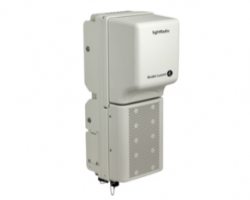As operators build heterogeneous networks to expand coverage and capacity, they want best-in-breed solutions and are ready to work with multiple vendors. Vodafone has shown that equipment from more than one vendor can interoperate within a single location by integrating Alcatel-Lucent’s small cells with Ericsson’s LTE macro cells.
Alcatel-Lucent has historically supplied Vodafone with femtocells and enterprise small cells. Now Vodafone has conducted a successful live field trial under-laying the macro network (Ericsson) with Alcatel-Lucent’s outdoor small cells. Alcatel-Lucent calls the move “a major change from the old mindset that a single vendor be the sole equipment provider in a given part of the network.”
The trial took place in Amsterdam, a city which is emerging as a small cell pioneer. Earlier this year, the world’s largest outdoor advertising company, JCDecaux SA, worked with Vodafone to deploy 200 4G small cells on bus shelters in Amsterdam. The company did not name the small cell vendor, but it is probably Alcatel-Lucent, given the company’s relationship with Vodafone and its commitment to work with outdoor advertising companies on metro cell deployments.
Alcatel-Lucent is now a “supplier of reference” for LTE metro cells with integrated Wi-Fi capability for Vodafone’s Project Spring. This means that the equipment vendor can bid for metro cell business in all countries in which Vodafone is deploying. Alcatel-Lucent already has 115 contracts small cell contracts in more than 45 countries. Many of those contracts are for indoor small cells.
Follow me on Twitter.

Alcatel-Lucent small cells integrated with Ericsson LTE network
ABOUT AUTHOR
